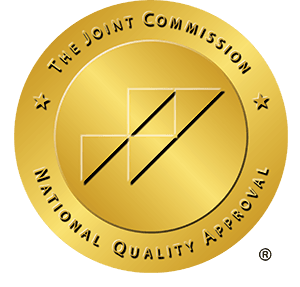
Scheduling Your Day: How Creating a Schedule Can Help With Addiction Recovery
You may be in a treatment program right now, trying to think up creative ways to help your addiction recovery long-term. If so, you are not alone. Many men spend time in treatment trying to figure out the best ways to maintain sobriety post-treatment. There are many pillars to recovery, but sometimes the more mundane tasks can help with your sobriety. That includes exercising, playing sports, hobbies, and spending time with friends and family. This article will focus on how creating a schedule can help with addiction recovery.
Creating a schedule is another mundane task that can support your recovery. We will get into what that is, but first, we want to encourage you to seek treatment if you are actively struggling with addiction. Healing Pines Recovery can help you obtain sobriety by implementing evidence-based, holistic, and experiential modalities into an individualized treatment plan.
Finding Ways to Stay Sober
We all ask the big question while in treatment: How do we stay sober after treatment? Unfortunately, there is not one correct answer to this question. People remain sober in all types of ways, including:
- Setting goals. Establishing achievable goals helps to motivate you throughout treatment and well into recovery. Goals give us purpose and help to alter our behaviors.
- Exercise and physical activity are also excellent for maintaining recovery. That includes all types of exercise, whether you enjoy running, hiking, playing basketball, or going to the gym. Physical activity can help you learn new behaviors, enhance mental and physical well-being, and improve sleep, digestion, and a number of other functions. That is all in addition to helping you maintain sobriety.
- Meditation and mindfulness can also be formidable tools in your relapse prevention toolkit. In addition to sustaining recovery, mindfulness relieves stress, increases relaxation, reduces anxiety and depression, and creates positive well-being. Mindfulness meditations and practices do not have to be elaborate. You can practice mindfulness today by simply being more observant, taking in the present moment, and practicing gratitude for every little blessing you can think of.
These are not the only ways to stay sober post-treatment. You should also consider attending therapy, working the Twelve Steps, attending support group meetings, and checking in with your support network as frequently as possible. As mentioned, another thing to consider is creating a schedule.
How Does Creating a Schedule Help You in Recovery?
Creating a schedule for yourself in recovery is vital for one main reason: It offers structure. Structure, routine, and patterns are vital to addiction recovery. Creating a schedule can help you:
- Focus on tasks and avoid triggers. The other reason exercise and physical fitness help with recovery are that they offer distractions. That also goes for daily tasks. Having a series of tasks or a checklist to follow daily keeps the mind off triggers and helps you prevent relapse.
- Develop self-control and discipline. After initial treatment and your early recovery, you can begin focusing on strengthening your self-control. This will help in the long run, especially in situations where you cannot avoid all substances. For example, if there tends to be alcohol present at parties or your family’s annual cookout, you may experience cravings at events like these. The ability to control those cravings is crucial to sustaining sobriety.
- Learn new habits or develop new hobbies. Developing healthy habits or pursuing new hobbies takes time and energy. By creating a schedule, you force yourself to carve out time to focus on those habits or hobbies. It will also help you avoid boredom, which can, ultimately, reduce the risk of relapse.
- Boost your confidence. The ability to accomplish an array of things throughout your day feels incredible. This may include completing a daily workout, making a healthy meal, or learning a new skill.
How to Start Creating a Schedule for Yourself
Creating a schedule for yourself may be challenging if you are still in treatment. Your schedule may depend on a number of factors, such as if you return to work immediately or decide to go back to school.
Aside from factors that are out of your control, you can start creating a schedule for yourself by:
- Making a list of things you want to achieve in recovery
- Prioritizing goals or daily tasks you want to follow
- Writing down your goals and ideas and setting deadlines for yourself
Also, consider creating a daily routine for yourself. That may include waking up at the same time every day, exercising every morning, planning your meals, going to work, scheduling chores, and planning which support group meetings you will attend.
There are so many benefits to creating a schedule in addiction recovery. Of course, once a schedule is in place, it can be modified as your schedule changes, but it’s important to stick to a current routine, whatever it may be.
There are many pillars to effectively maintaining addiction recovery. That includes setting goals for yourself, exercising daily, and practicing meditation and mindfulness. However, another way to sustain sobriety long-term is to create a schedule for yourself. Creating a schedule provides structure, reduces boredom, and creates everyday tasks you can accomplish and feel good about completing. You can make a plan by writing down your goals, prioritizing tasks, and creating a daily routine. We need structure to maintain recovery. Creating a schedule can help you do that. To learn more or start your recovery journey, call (720) 575-2621. Healing Pines Recovery can help you construct a life of sobriety for yourself today.
Paul Leafstedt
Paul was born and raised in the beautiful state of Colorado. He went to college in California at CAL Poly Pomona, majoring in Mechanical Engineering. Being a person in recovery and always finding fulfillment in helping others succeed, Paul co-founded a treatment center in California with 4 other partners. Paul came back to Colorado to continue his journey in the field of addiction, and to share his vision for Healing Pines Recovery. “Colorado is such a magical place for me, its natural beauty and peace lend itself for the perfect environment to connect with yourself and others. Healing Pines is different, it’s real, you can feel it. What you see is what you get here. This is a safe place to dig deep and be vulnerable, to re-discover yourself, what the world has to offer and what you have to offer the world.”Begin Your Journey & Escape Addiction
The first step can be the hardest. Fill out the form or call us at (720) 575-2621. You will be connected with a Healing Pines Recovery specialist who can answer your questions and help you get started.
Let Us Help You
Speak to Someone Right Now







